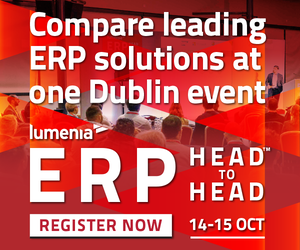When it comes to selecting projects for implementation, APC follows a very systematic approach involving a scorecard-based documentation system.
Eugene Maxwell explains: ‘Any time anybody wants to drive business improvements, especially if it involves spending large sums of money, the proposal has to be documented in our company projects database.’
APC divides projects according to size: large or small. Large projects are those that have budgets of greater than $100k or which will use eight man weeks of people’s time. Everything else is classed as a small project.
Regardless of size, all have to be approved using the standard process. Each project will have a business sponsor, usually a company vice president, and not necessarily somebody from the technical side of the business. ‘It’s usually a business leader, rather than an IT person,’ says Maxwell.
The scorecard analysis is carried out using a standard form, which is made available using the company’s Lotus Notes application. The form contains a number of questions, which have to be answered and graded according to relevance.
Typical questions include: Does it solve customer problems? Does it defend the company from a competitive threat? Does it open new markets? Does it improve the quality of the company’s sales offerings?
More involved questions revolve around matters like return on investment. Will it result in cost savings over the next three years, or will it delivery improvements in gross margin? There are also questions relating to the costs of the project, the ongoing maintenance costs once it is completed and the number of man weeks it will take to deliver.
The Notes system then uses a method worked out by APC’s head of research and development to calculate a term called the Figure of Merit. This is an indication of how beneficial to the company the proposed project will be if it is implemented. The higher the Figure of Merit, the more likely the project is to be approved.
One drawback is that some types of project are more likely to score higher Figures of Merit than others. ‘The projects that are going to be of most direct benefit to our customers end up getting huge Figures of Merit,’ says Maxwell.
He points to the example of a configurator feature on the company’s website that allows customers effectively to custom design their own equipment based on available modules.
As different customers have different requirements for UPSs – some will require large air-conditioned units, whereas others will have more modest requirements – different software modules, or build-out tools as they are called, will have to be written for each type of product. Because the scorecard process puts such a weighting on improving the service to customers, these build-out tools score very highly. By contrast, IT infrastructure projects are hard to justify.
‘It’s quite difficult to make a case for an IT infrastructure project,’ says Maxwell, ‘because it’s a nebulous thing. Will it really bring in more customers and more revenue? Probably not.’
To counteract this, and mindful of the fact that IT infrastructure has a vital role to play, APC allows its leadership council, which comprises all the company’s vice presidents, to take the final decision on whether a project receives approval. In the case of infrastructure projects, a vice president, often the CIO, will ‘go into bat’ to insist that a project is approved.
‘There are two ways a project gets chosen,’ says Maxwell. ‘One is that it gets a high Figure of Merit. The other is that the leadership council, after intercession from a project sponsor, decides that the project will get done anyway.’
23/02/04








Subscribers 0
Fans 0
Followers 0
Followers